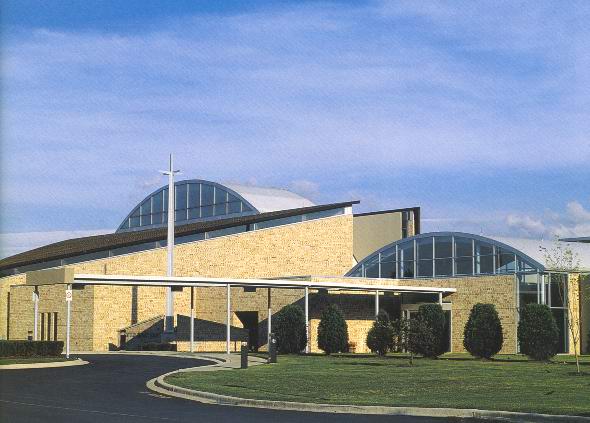c. Decree on Ecumenism: Christian unity is a
matter of restoration, not of a return to Rome; other Christian
communities are churches within the Body of Christ; and both sides were to
blame for the divisions of the Church.
d. Constitution on the Sacred Liturgy: The Church proclaims the Gospel not only in word
but also in sacrament, or by sacred signs. Since the whole People of God
is involved in this worship, the signs must be intelligible.
e. Dogmatic
Constitution on Divine Revelation: The
Word of God is communicated through Sacred Scripture, sacred tradition;
and the teaching authority of the Church, all linked together and guided
by the Holy Spirit. The sacred realities are always open in principle to a
growth in understanding.
f. Declaration on Religious Freedom: No
one is to be forced in any way to
embrace the Christian or the Catholic faith. This principle is rooted in
human dignity and the freedom of the act of faith.
g. Declaration on the Relationship of
the Church to Non-Christian Religions: God
speaks also through other religions, so we should engage in dialogue and
other collaborative efforts with them. The Jews have a special
relationship to the Church. They cannot be blamed as a people for the
death of Jesus.
a. Decree on the Church's Missionary
Activity: The Gospel is to be preached
also and always to non-Christians, but not as a culturally alien reality.
Evangelization is an obligation for every member of the Church.
b. Decree on the Apostolate of the
Laity: The laity participates in the
whole mission of the Church, but especially in the temporal order.
c. Decree on Eastern
Catholic Churches: The Eastern Catholic churches can be a bridge to the
Orthodox East. The integrity of Eastern traditions of liturgy,
spirituality, and discipline is to be restored and respected.
d. Decree on the Bishops' Pastoral Office in the Church: Bishops are the pastors of their own local
churches, collaborate with other bishops through episcopal conferences,
and with the pope and all other bishops through the episcopal college.
Authority is always for service.
e. Decree on the Ministry and Life of
Priests: Priests are members of a
presbyterium in union with a bishop, and with him serve the building up of
Christ's body.
f. Decree on Priestly Formation: There must be a closer connection between
seminary training and the pastoral situation.
g. Decree on the Appropriate Renewal of
the Religious Life: The renewal of religious life must be based on the Gospel,
the original purposes of the community, and the changed conditions of the
times.
h. Declaration on Christian Education: Education must be
broadly humane and up-to-date, with a concern for personal maturity and
social responsibility.
i. Decree on the Instruments of Social
Communication: The Church must be vigilant toward the media because of
the ever-present danger of their abuse, but must also use the media where
opportune.
7. The distinctive ecclesiology of Vatican II is based on the following
principles:
a.
The Church is a mystery, or sacrament, and not primarily an institution or
organization.
b.
The Church is the whole People of God, not just the hierarchy.
c.
The whole People of God participates in the mission of Christ, and not
just in the mission of the hierarchy.
d.
The mission of the Church includes service to those in need, and not just
the preaching of the Gospel or the celebration of the sacraments.
e.
The Church is a communion of churches. It is truly present at the local
level as well as at the universal level. A diocese or parish is not just
an administrative division of the Church universal.
f.
The Church includes Orthodox, Anglicans, Protestants, and Oriental
Christians as well as Catholics. The Catholic Church includes the Eastern
Catholic churches as well as Roman Catholics.
g.
The mission of the Church includes the proclamation of the Word, the
celebration of the sacraments, the witnessing to the Gospel individually
and institutionally, and the rendering of service to those in need.
h.
All authority is for service, not domination.
i.
Religious truth is to be found outside the Church as well. No one is to be
coerced to embrace the Christian or the Catholic faith.
j.
The Church is always for the sake of the Kingdom of God and is not itself
the Kingdom.

